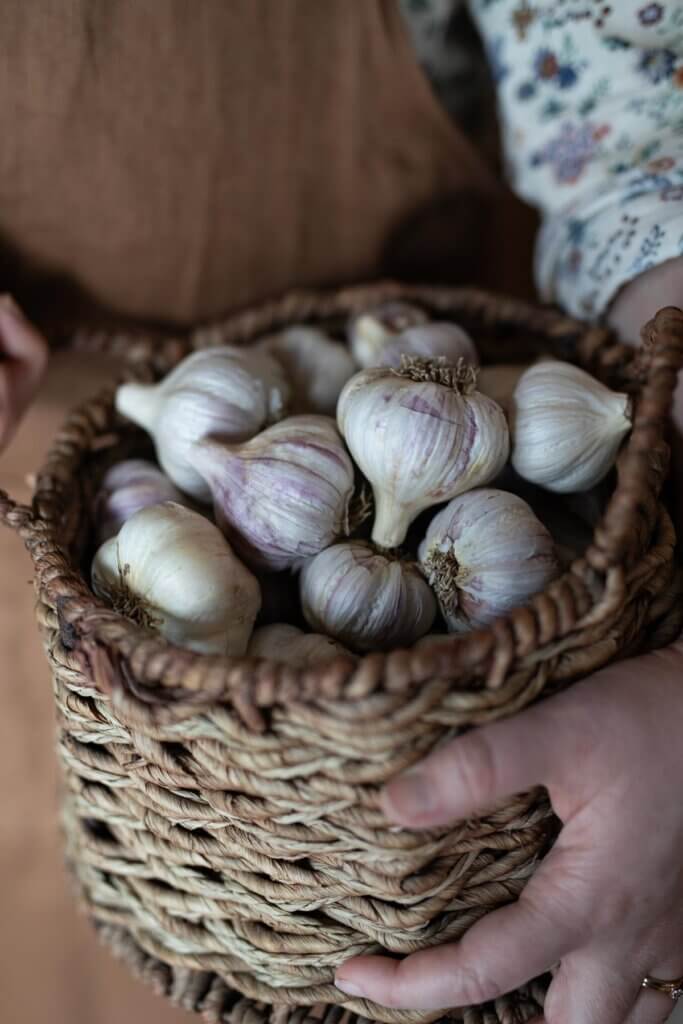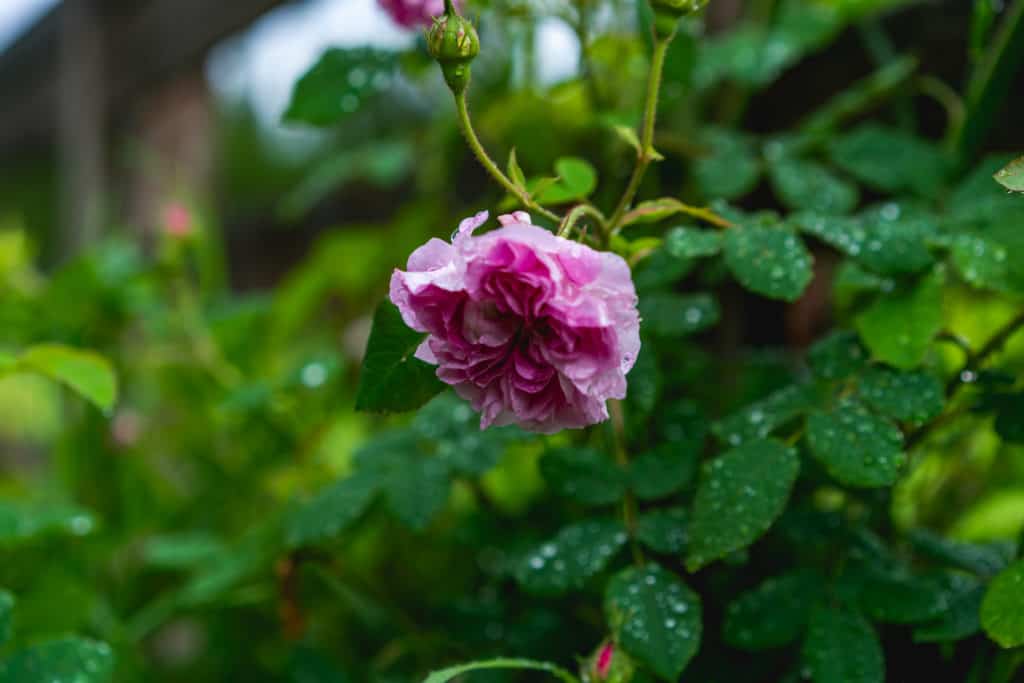







Knowing which medicinal herbs to grow and their uses can be daunting. Here are the top 15 herbs we recommend and their common remedies.

Home remedies are wonderful to have in a time of need, especially for boosting your immune system naturally. But as with any home medicinal cabinet, it’s not built in a day. Some of our favorites are these homemade cough remedies, homemade elderberry syrup, elderberry gummies, medicinal hop tea, this remedy for chest congestion, and even this mustard plaster remedy.
We cannot give medical advice, so you won’t find dosing information in this post, rather, we’re just listing the top herbs we ourselves use and what we use them for.
If you haven’t taken my free series on how to use medicinal herbs in your own home, you really should! It’s a perfect jumping-off point to using herbal home remedies.
It’s important to note that I am not a certified medical practitioner. This post is not intended to diagnose or treat but is for informational purposes only. Please contact your healthcare professional before introducing new herbal and natural remedies into your wellness routine.
Top 15 Medicinal Herbs to Plant
- Peppermint
- Calendula
- Bee Balm (Bergamot)
- Lemon Balm
- Tulsi (Holy Basil)
- Echinacea
- Elecampane
- Sage
- Oregano
- Garlic
- Horseradish
- Marshmallow or Hollyhock
- Yarrow
- Chamomile
- Dill
When To Harvest For Medicinal Use
Harvesting your medicinal herbs and plants is different depending on which part of the plant is used for each remedy.
For some plants, you’ll want to harvest the leaves BEFORE the plant flowers. This ensures you’re harvesting the leaves at the height of their medicinal potency.
For some plants you’ll want to harvest the flower, usually just as the flower is beginning to open.
Still other plants aren’t harvested until the plant dies back and you’ll use the root of the plant.
To know how to harvest your medicinal herbs, come along with Carolyn as she walks you through the Cottage Garden, demonstrating when and how to harvest medicinal herbs.

Knowing Which Herbs to Plant
Knowing which herbs to plant comes down to a personal choice. My recommendation is to read through the list of herbs and their common uses, then decide which herbs will help the majority of the issues you and your family face.
Planting herbs that you’ll use is top priority. If you don’t think you’ll use them, they can certainly brighten up your yard, but it’s always best to plant what you’ll use.
If you just can’t plant everything, be sure to check out our favorite resource for medicinal herbs, Farmhouse Teas.
These recommendations are in no particular order, so let’s dive right in.

Peppermint
You’ll notice there are many culinary herbs that are also medicinal in nature. These are some of the easiest herbs to grow because you’ll likely have many uses for them, both to cook with, and to treat symptoms.
Some people need to be careful about planting peppermint because it can invade and spread all over your garden. Using a pot to detain the plant might be the best solution.
Peppermint is wonderful for upset stomachs and can even help with motion sickness. (Source) It’s a very cooling herb and wonderful made into an herbal tea or tincture.
We add peppermint to steam inhalation treatments for congestion because it aids in opening sinus passages and to headache salve because it has been shown to help relieve tension-type headaches. (Source)
Medicinal Uses for Peppermint
- Stomach issues
- Sinus issues & congestion
- Cooling (hot summer day, cooling topically)
- Headaches (topically and internally taken)
- Motion/morning sickness

Calendula
Calendula is well known for its soothing properties. (Source) You’ll oftentimes find calendula in herbal salves, body washes and even shampoos.
It has a beautiful flower and makes a great addition to the garden. The flowers, which can vary in color, will drop their seeds and come back year after year. It’s easy to grow calendula and is also a great pollinator because the insects like it.
Although the flavor of calendula isn’t the best on its own, when combined with something like peppermint, it makes a great tea. Use this tutorial to make a healing calendula oil infusion for medicinal use.
Medicinal Uses for Calendula
- Skin issues
- Rash
- Wounds (homemade antibiotic ointment)
- Diaper rash
- Lymph stimulant (great for swollen glands) (Source)

Bee Balm (Bergamot/Monarda)
Also known as Bergamot or Monarda, Bee Balm is a wonderful plant to grow because of its anti-microbial properties. This means it’s anti-viral, anti-bacterial and anti-fungal. (Source) Anti-microbial plants are some of the best medicinal plants to grow because they can cover a variety of issues.
Medicinal Uses for Bee Balm
- Anti-microbial
- Anti-fungal
- Anti-bacterial
- Anti-viral
- Soothes coughs (Source)
- Relieves stomach cramps (Source)
- Soothes skin (Source)
- Calms tissue while fighting microbial problems (great for children)

Lemon Balm
Lemon balm is also in the mint family, so plant wisely. If I had to pick only one herb to plant in my garden, I’d pick lemon balm because of all the medicinal uses it has.
Not only is it great tasting, it’s very light and very gentle so it’s a great herb for children. It’s also a strong and effective herb.
In the pharmaceutical world, the stronger a medicine is, the more dangerous it is, but this is not always the case with the herbal world. An herb can be very strong and also very gentle.
If you’re feeling stressed, simply going out to the garden and crushing some of the leaves in your hand, then inhaling the aroma can help soothe frayed nerves. (Source)
Medicinal Uses for Lemon Balm
Here is a guide showing ways to prepare lemon balm for various herbal uses.

Tulsi (Holy Basil)
Also a favorite because of its culinary uses, Tulsi is an adaptogen which is great for energy. It helps you adapt during stressful times and helps regulate the stress response. (Source)
It’s worth learning how to grow a tulsi plant and how to use it.
Medicinal Uses for Tulsi
- Regulates stress response
- Anti-bacterial (great for use orally)
- Helps with focus
- Promotes energy

Echinacea
Probably one of the better-known herbs, the Echinacea plant is great to use when building up your immune system (like if an illness is already in the house). (Source)
This plant is best harvested the second year so it has time to spread. When you harvest echinacea, you pull it up by the root and harvest the whole plant. So you’ll want to allow your bed to expand and build up a bit before pulling it up.
You can use different parts of the plant, but the roots are the most powerful.
Medicinal Uses for Echinacea
- Immune-stimulant (helps when used at the first sign of illness)
- Anti-infection (topically and internally)
- Sore throat

Elecampane
Elecampane is a great herb for bronchial issues. (Source) If you’re prone to consistent bronchial infections, this would be a fantastic medicinal herb to grow in your garden.
You also harvest the roots of this plant, so it’s best to allow it to become well established.
Medicinal Uses for Elecampane
- Colds/Flu (Source)
- Chest/lung congestion

Sage
Sage is a lovely culinary herb and is also wonderful for a wide variety of ailments. Perhaps one of the best medicinal benefits is its oral uses. (Source) If you have a toothache, a cold sore or a sore throat, you can pick a few leaves and chew them up, then place them near the affected area.
Generally, you just use the leaves of sage. This guide can help you successfully grow and care for sage plants.
Medicinal Uses for Sage
- Mouth/Throat issues (cold sore, sore throat, tooth ache)
- Correcting menopause issues
- Enhances brain fuction
- Tooth whitening (Source)

Oregano
Oregano is a must-have in our family because it’s so delicious on pizza! We use it in a lot of our cooking, but it is perhaps one of the most powerful herbs out there.
Oregano might be the best medicinal herb to grow because it’s anti-microbial so it will help fight against viruses, fungi, and bacteria. It’s also extremely high in antioxidants. (Source)
Medicinal Uses for Oregano
- Anti-viral
- Anti-fungal
- High in antioxidants
- Cold/flu

Garlic
Every herb garden should have garlic and onions growing, even if you don’t like the taste in your food; their medicinal purposes are incredible. They are anti-microbial and help fight all kinds of illness. (Source)
We grow garlic for medicinal and culinary uses. Many people love to ferment garlic in honey and, at first sign of illness, eat a clove or two of garlic to help knock out the illness in a flash.
Medicinal Uses for Garlic
- Anti-biotic
- Anti-fungal
- Anti-viral
- Tooth abscess
- Infections in the skin
- Colds

Horseradish
Horseradish is an incredibly spicy root that pairs very well with meat dishes. One of my favorite ways to serve it is grated, then mixed in with some cultured sour cream to use as a dip for meat or potatoes.
We grow horseradish to enjoy its flavor and health benefits. It grows in a clump, but will spread out over the years as it grows, so decide on an area of your garden where you don’t mind it taking up some space.
Medicinal Uses for Horseradish
- Sinus infection (Source)
- Bronchial infection
- Urinary Tract Infections (UTI)

Hollyhock
Hollyhocks are beautiful to grow in the garden, they’re a bit prettier than marshmallow but very closely related. You can eat all parts of the plant and the flowers really add a nice touch to salads.
Hollyhock is a mucilaginous herb, which means they have a thick gelatinous consistency (they “swell” in water). This is wonderful for soothing a sore throat and protecting irritated tissues. (Source)
Medicinal Uses for Hollyhock
- Mucilaginous
- Upset stomach
- Skin issues

Yarrow
Depending on where you live you might be able to forage for wild herbs including yarrow. If you can find it locally, by all means don’t plant it in your garden!
It is one herb I won’t be without because of how effectively it helps stop bleeding. (Source) With many kids in our family, this is something we’re bound to need from time to time!
Medicinal Uses for Yarrow
- Stops bleeding
- Reduce fever (by inducing a sweat)
- Flu (Source)

Chamomile
Probably the most recognized use for chamomile is as a tea to promote sleep. It has a wonderful sweet flavor (some say almost like a pineapple) and is great to drink before bedtime.
Chamomile is a great medicinal herb to grow because it’s so soothing, it’s also wonderful for an upset stomach and gas pain. (Source)
It is an annual plant, so you’ll need to replant it year after year.
Medicinal Uses for Chamomile
- Upset stomach
- Gas
- Promotes sleep
- Promotes calm
- Eye issues (conjunctivitis) (Source)
- Fever reducer (when used as an enema)

Dill
We always have dill in our garden because it’s so wonderful for pickling cucumbers and other veggies, plus our ferments usually have some dill stuck in there because we all love the flavor.
We grow dill medicinally because the seed is also fantastic to help eliminate gas and/or bloating, just take a few seeds and chew them up. (Source)
Medicinal Uses for Dill

Other Medicinal Herbs to Grow
- Rose
- Lavender
- Valerian (benefits & growing tips)
- Anise Hyssop
- Regular Hyssop
- Catnip

More Posts You May Enjoy
- Using Medicinal Herbs on Farm Animals
- How to Dry Fresh Herbs (Oven, Dehydrator, or Hanging)
- Homemade Dandelion Root Tea Latte
- Growing Thyme (Plant, Harvest, Preserve)
- Homemade Arnica Oil
- Growing Hops (+ Medicinal Benefits of Hops Plants)
- Easy Home Remedy for Allergies (+ Hay Fever)
- Using Herb Medicine Safely at Home


















